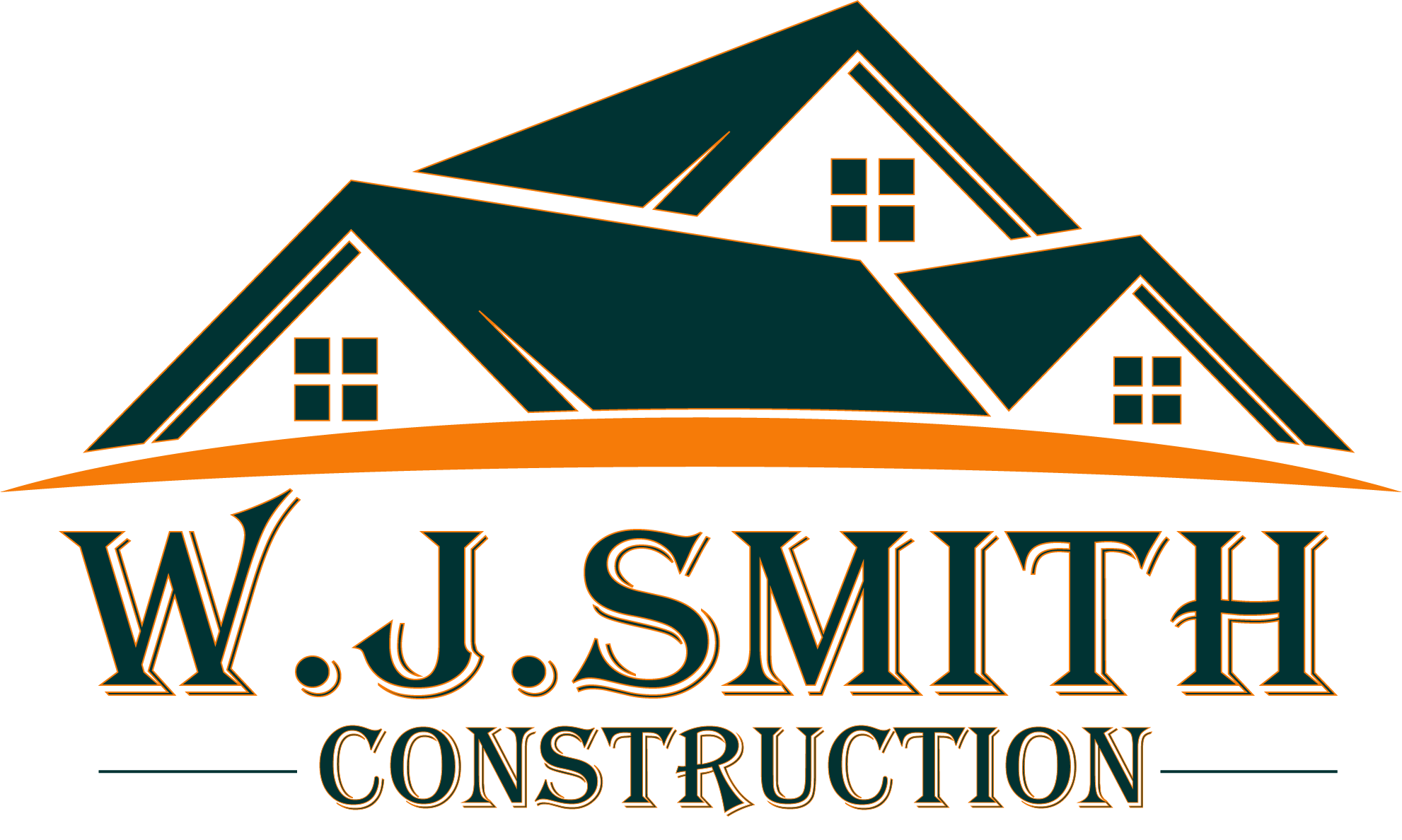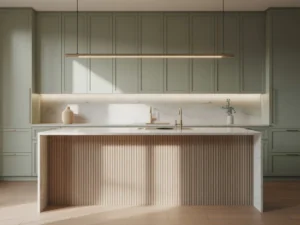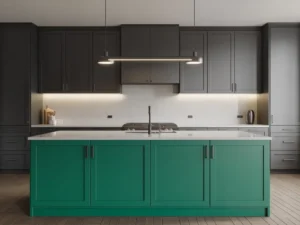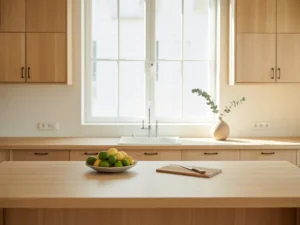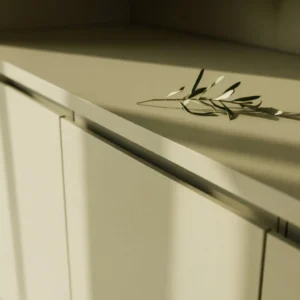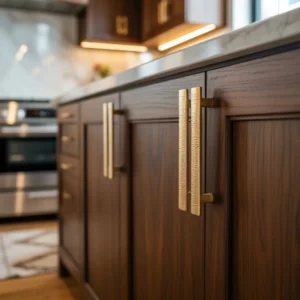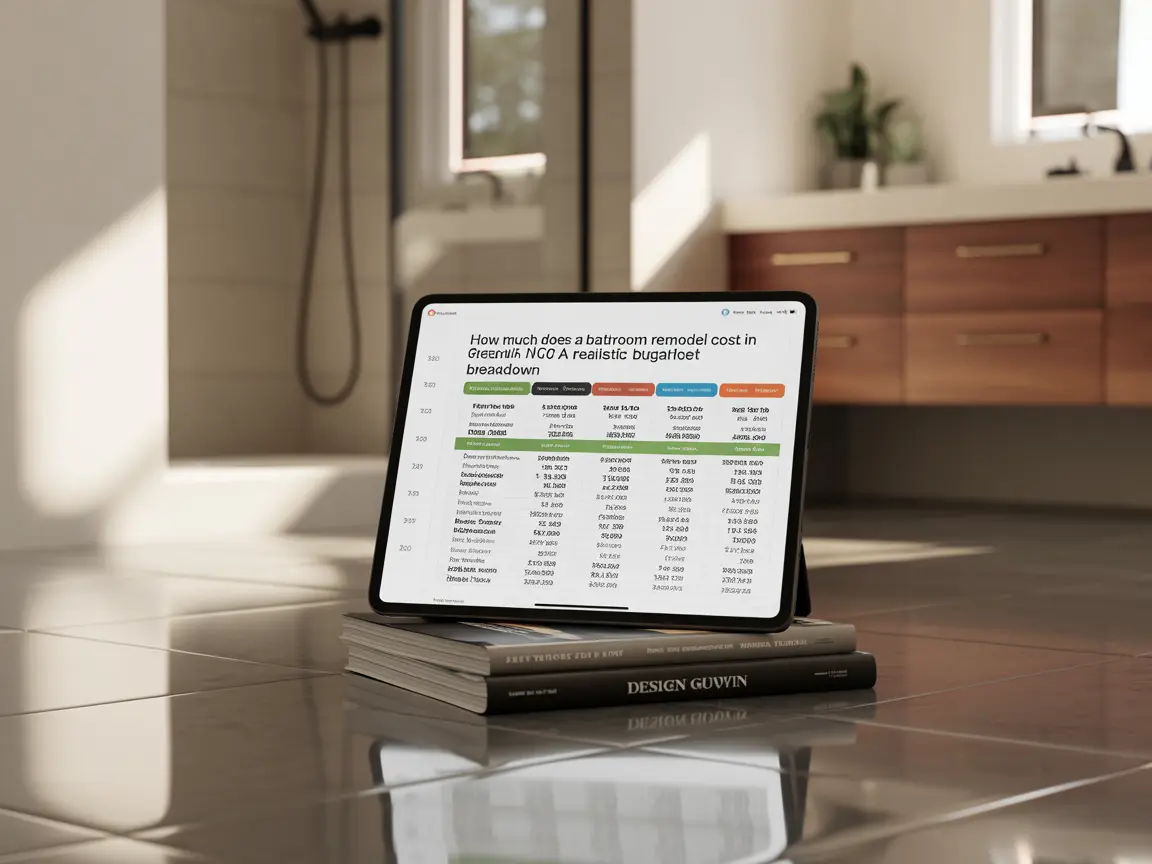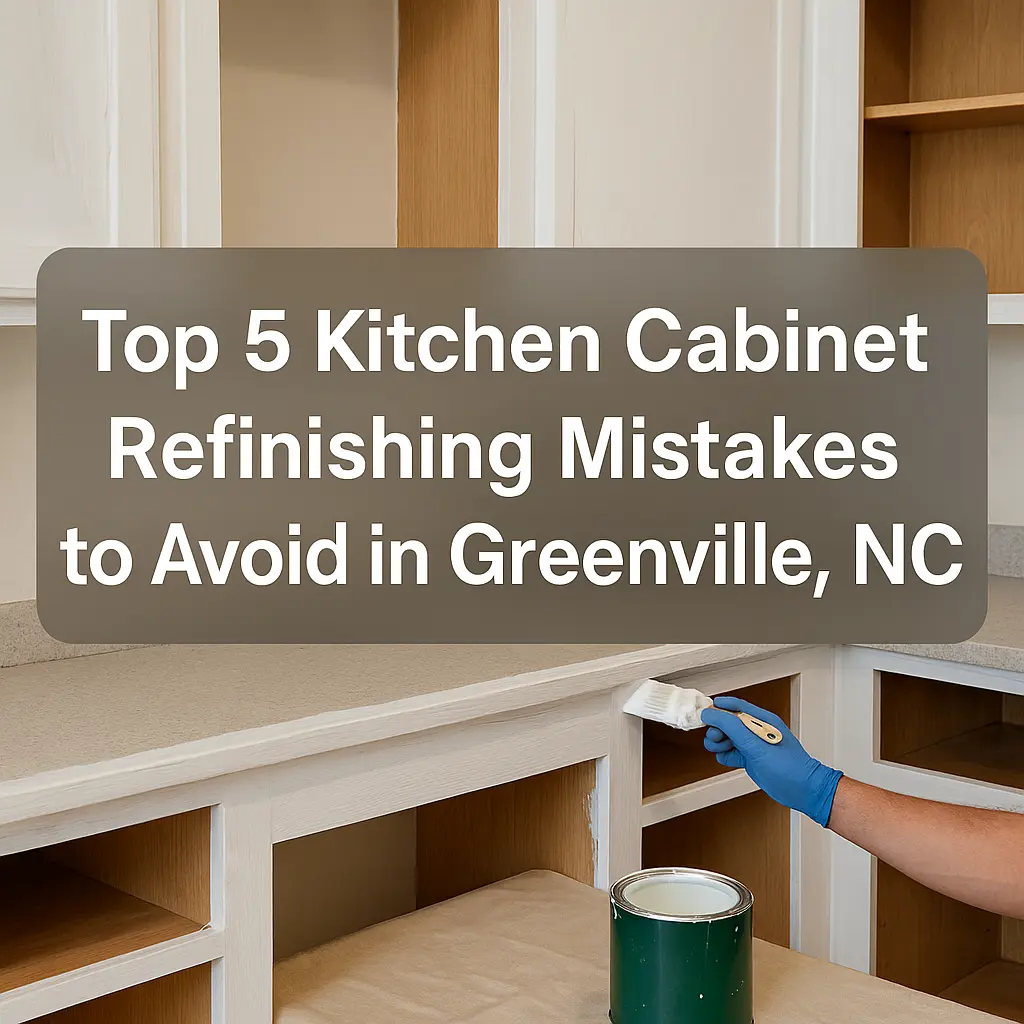Crafting the Future of Kitchen Cabinetry
The kitchen, long considered the heart of the home, is rapidly evolving beyond its traditional culinary function to become a dynamic, multi-purpose living space. This transformation is driving substantial investment in home renovations, making cabinet selection a pivotal decision that impacts both aesthetic appeal and long-term property value. As we look towards 2025, the trajectory of kitchen cabinetry is being shaped by a powerful interplay of consumer desires for personalization and enduring quality, a dynamic market experiencing growth in key segments, and an increasing imperative for environmental responsibility.
The significant financial commitment homeowners are dedicating to their kitchens underscores a broader shift. Data consistently reveals an expansion of kitchen footprints and a notable increase in renovation expenditures. The median investment for kitchen remodels reached $60,000 in 2024, an uptick from $55,000 in the preceding year.
For high-end major remodels, representing the top 10% of spenders, investments now exceed $180,000, tripling the median and marking a 20% increase for premium renovations since 2023. This level of financial commitment signals a fundamental redefinition of the kitchen from a utilitarian area into a sophisticated, multi-functional hub. This evolution directly fuels the demand for premium, custom cabinetry capable of supporting intricate designs, integrated technologies, and enhanced functionality, reflecting the kitchen’s elevated status as a central space for cooking, dining, entertaining, and daily life.
As a major visual and functional component, cabinetry naturally mirrors this increased investment and demand for quality, customization, and seamless integration with the broader home aesthetic. Consequently, cabinet choices are increasingly viewed as long-term investments in lifestyle and property value, rather than mere functional upgrades.
I. The Kitchen Cabinet Market in 2025: Data-Driven Insights
The kitchen cabinet market is demonstrating robust expansion, positioning itself as a significant growth engine within the broader home improvement sector.
Global and U.S. Market Overview
The global kitchen cabinets market was valued at an impressive USD 100.79 billion in 2024 and is projected to ascend to USD 107.86 billion in 2025 . This sector is anticipated to achieve a Compound Annual Growth Rate (CAGR) of 7.89% from 2025 to 2032, ultimately reaching an estimated USD 183.53 billion by 2032 . Within this global expansion, the U.S. market is poised for substantial growth, with projections indicating it will reach USD 43.03 billion by 2032 . Regionally, Asia Pacific commanded a dominant market share of 35.51% in 2024, valued at USD 35.80 billion, and is identified as the fastest-growing market segment .
While the overall U.S. kitchen and bath industry is projected for a more modest 0.8% growth in 2025, the kitchen cabinet segment’s notably higher growth rate underscores its strong performance within the home improvement sector . This significant disparity in growth rates suggests that kitchen cabinets represent a particularly robust category. This disproportionate growth is likely driven by the kitchen’s central role in home aesthetics and functionality, coupled with the increasing focus on high-value kitchen renovations where cabinets constitute a primary investment.
The following table provides a clear, concise financial overview of the kitchen cabinet market’s trajectory, both globally and for the crucial U.S. market. It substantiates the market analysis with concrete, quantitative data, lending significant credibility and authority to the report. For industry professionals, this table allows for a quick and comprehensive understanding of the market’s scale and projected growth potential, which is essential for strategic business planning, resource allocation, and investment decisions. It helps readers contextualize the emerging design trends within the broader economic landscape, demonstrating that despite some market shifts, the overall demand for kitchen cabinets remains robust and represents a significant sector.
| Year | Global Market Size (USD Billion) | U.S. Market Size (USD Billion) | Global CAGR (2025-2032) |
| 2024 | 100.79 | – | – |
| 2025 | 107.86 | – | 7.89% |
| 2032 | 183.53 | 43.03 | – |
Renovation Investment Trends
Kitchens consistently command the highest renovation expenditure among all interior projects. The median spend on kitchen remodels reached $60,000 in 2024, an increase from $55,000 in the previous year. For high-end major remodels, representing the 90th percentile of spenders, investments are $180,000 or more, which is triple the median, and marks a 20% increase for premium renovations from 2023.
Larger kitchens, defined as 250 square feet or more, command even greater investments. The median spend for major remodels in these expansive spaces reached $72,000 (up 9%), while minor remodels saw a significant jump to $35,000 (up 75%). The top 10% of spenders on large kitchens invest a minimum of $200,000 for major remodels and $74,300 for minor remodels. A substantial portion of homeowners, 35%, are increasing their kitchen footprint during remodels, often by incorporating space from dining rooms (29%) or living rooms (12%), or by building a home addition (18%). This consistent data points to a significant increase in spending on high-end and large kitchen renovations, alongside a trend of expanding kitchen footprints. This is not merely about replacing old fixtures; it is about fundamentally transforming the kitchen. This signals a long-term trend towards kitchens as sophisticated, multi-functional living spaces, rather than just utilitarian areas.
The following chart visually emphasizes the significant disparity between median and high-end spending on kitchen renovations. The visual representation makes the “premiumization” trend, where a smaller segment of the market invests substantially more, immediately apparent and impactful. It directly supports and reinforces the observations regarding increasing investment in luxury and large kitchen projects, illustrating the financial commitment homeowners are making to these spaces. For businesses, this visual data helps in identifying and understanding the lucrative high-end market segment, informing product development, marketing strategies, and client targeting efforts. It clearly illustrates the consumer’s willingness to invest significantly more for premium, tailored kitchen transformations, validating the focus on custom and high-value offerings discussed throughout this report.
Chart 1: U.S. Kitchen Renovation Spend by Project Type (Median vs. High-End)
| Project Type | Kitchen Size | Median Spend (USD) | 90th Percentile Spend (USD) |
| Major Remodel | Overall | 60,000 | 180,000+ |
| Minor Remodel | Overall | 20,000 | 67,000+ |
| Major Remodel | 250 sq ft+ | 72,000 | 200,000+ |
| Minor Remodel | 250 sq ft+ | 35,000 | 74,300+ |
Cabinet Segment Performance and Consumer Preferences
Wood remains the dominant material in the kitchen cabinet market, holding approximately 61% of the market share in 2024, primarily due to its sustainability and strength . Shaker kitchen cabinets continue to dominate the global market, favored for their affordability, design aesthetics, and ease of cleaning and maintenance, with 61% popularity among homeowners .
While stock kitchen cabinets led the global market in 2024, the demand for custom kitchen cabinets is projected to grow considerably in the coming years . This growth is driven by benefits such as exclusive design and enhanced storage solutions tailored to user requirements . This trend is strongly supported by U.S. data: while total cabinet sales saw an overall dip of 4.4% year-to-date through May 2024, custom cabinet units simultaneously rose by 7.2% during the same period . Furthermore, the average order value for custom cabinetry increased by 12% . Ready-to-Assemble (RTA) cabinets are also experiencing significant growth, projected at approximately 6% CAGR from 2024 to 2029 , appealing to buyers seeking cost-effective alternatives .
This market dynamic presents an interesting pattern: overall cabinet sales are experiencing a decline, yet both custom cabinets and RTA cabinets are experiencing growth. This suggests a market polarization rather than a uniform shift. High-end consumers are increasingly opting for bespoke, personalized solutions, willing to pay a premium for unique design and functionality . Simultaneously, budget-conscious buyers are embracing affordable, self-assembly (RTA) options for their cost-effectiveness . This implies that the traditional “middle ground” of semi-custom or standard stock cabinets, which offer neither extreme value nor extreme personalization, might be experiencing a squeeze. For manufacturers and designers, this necessitates a clearer strategic focus: either cater to the premium, custom segment or optimize for efficiency and affordability in the RTA market.
II. Modern Cabinet Styles: Understated Elegance and Timeless Appeal
For 2025, modern cabinet styles are defined by a move towards understated elegance, emphasizing serene palettes, natural textures, and sophisticated finishes that promise enduring appeal.
Evolving Color Palettes for 2025
A notable shift is occurring towards softer, more muted hues, moving away from the dark, moody tones that dominated previous years. This reflects a desire for serenity and authenticity in the kitchen space.
- Muted Hues: Softer versions of classic colors like green, blue, or burgundy are considered emerging trends. These pale colors are versatile, pairing beautifully with medium to dark-toned woods, unlacquered brass or polished nickel finishes, and classic natural stones such as Carrara marble.
- Warm Browns: The use of brown has made a strong comeback in interior design, becoming a key element for creating cozy kitchen schemes in 2025. Shades like Wenge AF-180, French Press AF-170, and Char Brown 2137-20 offer a sophisticated yet warm approach, proving highly versatile with different textures and substrates.
- Pale Muted Pinks: A surprisingly chic return, focusing on soft, muted variations rather than bright, bold pinks. This flattering shade can be paired with green for a bold yet harmonious scheme or combined with warm whites for a classically elegant design.
- Butter Yellows: Positioned as a prominent color for 2025, butter yellow brings a soft yet saturated hue that creates a warming atmosphere. It serves as a perfect middle ground between neutral and colorful without being overwhelming, often paired with white walls and wooden kitchen islands for a timeless scheme.
- Rich Pale Creams: A light but warm neutral hue, often described as “clotted cream,” subtly working with muted butter yellow tones. Authentic darker shades like mossy green or greeny brown can be added for depth.
- Earthy Green Hues: Green is increasingly viewed as a neutral, with earthier tones like olive, moss, and sage dominating kitchen cabinet trends. These tones bring depth and calm, fostering a connection to nature and are increasingly seen alongside wood cabinetry for contrast and texture.
- Shades of Cashmere: Soft, calming warm neutrals such as cashmere, mushroom, and stone are gaining popularity as a softer alternative to traditional gray. These tones bring warmth without overpowering the space and complement classic cabinetry styles like Shaker or Georgian.
- Calming Light Blues: Light, powder blues are gaining traction for kitchen cabinets, creating a soothing space. This trend works well with “color-drenching” ideas, extending the calming hue beyond cabinets to walls.
- Soft Charcoals: Moving from stark black, a slightly less harsh dark charcoal, such as Sherwin-Williams’ Iron Ore, is on-trend. It offers a rich, moody yet softer feel, pairing well with rich, unlacquered brass cabinet hardware and black plumbing fixtures.
Sophisticated Finishes and Textures
A significant trend for 2025 is a clear preference for stained wood over painted finishes. This is favored for its classic and durable look, as well as ease of maintenance. A walnut stain with a blue tint is noted as a particularly appealing option, complementing blue quartzite countertops and working well in open floor plans. Matte finishes continue to offer a subdued, sophisticated look and are practical as they are better at hiding imperfections like fingerprints and smudges.
Harmonious Design Integration
These modern palettes are often designed to pair seamlessly with natural materials and complementary hardware, enhancing the overall aesthetic. The consistent emphasis on “muted,” “soft,” “calming,” “earthy,” and “warm” color palettes, combined with the explicit preference for stains over paint and the popularity of matte finishes, highlights a strong desire for authenticity, durability, and low maintenance. This collective trend suggests that homeowners are seeking to create kitchen environments that feel serene, authentic, and enduring. The focus is on a sophisticated, grounded aesthetic that prioritizes comfort, longevity, and a sense of calm, moving away from fleeting, high-drama trends. This aligns with the broader movement towards designs that integrate warmth and classic elements for a more livable and timeless space.
III. Bold Cabinet Styles: Making a Statement
For homeowners seeking to infuse personality and drama into their culinary spaces, bold cabinet styles offer vibrant hues, innovative finishes, and unconventional design techniques.
Vibrant and Dramatic Hues
Homeowners are increasingly opting for vibrant hues to create striking culinary spaces, signaling a move away from strictly traditional neutral tones for a more expressive look.
- Rich Blues: Deep shades such as navy, midnight blue, and teal are emerging as bold choices, creating sophisticated atmospheres and transforming the kitchen into a striking focal point. These are often paired with contrasting tile backsplashes to add depth and visual interest.
- Trending Greens: Shades ranging from soft sage to vibrant emerald and deep forest green are gaining significant popularity, bringing a refreshing and natural feel to the kitchen space.
- Playful Yellows: Bright colors like mustard, lemon, and honey are trending, adding energy and vibrancy to modern kitchens and serving as cheerful focal points.
- Darker Shades: Black, charcoal, and midnight blue are gaining traction for their dramatic effect and modern aesthetic, appealing to those seeking a sleek and bold look. Black, in particular, is noted as a timeless color making a strong comeback.
- Burgundy and Shades of Purple: These surprising yet elegant dark shades are becoming a hit in kitchen design, bringing a luxurious feel to interiors, especially when combined with gold accents or stone features.
- Strategic Orange Accents: Orange has emerged as a popular accent color when paired with neutral cabinets, adding warmth and a burst of energy to the design.
Innovative Finishes and Textures
Glossy finishes create a modern, spacious feel by reflecting light, which enhances the vibrancy of bold colors and can make smaller spaces appear larger. Metal finishes, such as brushed stainless steel or hammered copper, offer a contemporary edge and enhanced durability, contributing to a unique aesthetic. Textured laminates and 3D-printed surfaces provide unique tactile experiences and visual interest while maintaining practicality and durability.
Unconventional Design Techniques
Two-tone designs are gaining significant popularity, providing versatility and visual interest by combining different colors or materials. Popular combinations include White and Dark Wood, Black and White, White and Light Wood, Blue and White, and Wood and Black. Often, lighter upper cabinets are paired with darker lower cabinets, or a deep wood island/lowers are combined with white uppers to balance brightness and depth. Specific examples include White/Navy Blue for a Classic Coastal look, Light Gray/Dark Green for Modern Nature, Cream/Charcoal for Contemporary Contrast, and Natural Wood/Sage Green for an Organic Fusion.
Color washing, a technique involving applying a thin layer of diluted paint over a base color, creates depth and texture for a weathered or antique look. Ombre painting creates a gradient effect, transitioning from light to dark shades of the same color or complementary hues, adding visual interest and making cabinets appear taller or wider.
The consistent emphasis on the rise of bold colors, dramatic finishes, and, most notably, two-tone designs, with descriptions of two-tone designs offering “versatility and visual interest” and “balancing light and depth,” is crucial. This indicates that the embrace of “bold” is not about overwhelming the space with a single intense color, but rather about strategic combinations that create impact while maintaining overall harmony and adaptability. This approach allows homeowners to make a strong design statement and express personality, while simultaneously ensuring the kitchen remains elegant and timeless enough to integrate with broader home aesthetics.
IV. Sustainable Cabinet Trends: Eco-Conscious Choices for the Future
Sustainability is increasingly viewed as a priority rather than just a fleeting trend for homeowners designing their dream kitchens . This shift reflects a growing awareness of environmental impact and a desire for healthier living spaces.
Eco-Friendly Materials
- Bamboo: Recognized as one of the most eco-conscious cabinet materials due to its rapid growth and regeneration (3-5 years) without replanting . It also offers a sleek, contemporary look suitable for modern kitchens .
- FSC-Certified Wood: For those preferring traditional wood, products certified by the Forest Stewardship Council (FSC) ensure responsible sourcing from forests that meet high environmental and social standards . Popular durable options include Maple, Oak, and Birch .
- Reclaimed and Recycled Wood: Using reclaimed wood adds unique character and patina, preventing usable materials from ending up in landfills . Recycled wood or wood composites made from post-consumer waste are also gaining popularity as cost-effective, sustainable alternatives .
- Composite Wood: Materials like particleboard, medium-density fiberboard (MDF), and oriented strand board (OSB) are considered eco-friendly when made with recycled content and certified by organizations like FSC .
- Innovative Materials: Manufacturers are exploring recycled plastics for cabinet components, agricultural waste composites (e.g., straw, sugarcane bagasse) that are durable and moisture-resistant, and emerging biodegradable options like mycelium, plant-based resins, and natural fibers designed to break down naturally at the end of their life cycle.
Nontoxic Finishes and Adhesives
The eco-friendliness of cabinets extends beyond raw materials to the adhesives and finishes, which are crucial for reducing off-gassing and improving indoor air quality . Homeowners should seek:
- Low-VOC/No-VOC Finishes: These include water-based finishes (significantly lower VOC content, faster drying, minimal odor), natural oils and waxes (derived from renewable sources, enhance natural grain, free from synthetic chemicals), and plant-based finishes (minimal to no VOCs, durable, resistant to moisture, stains, and UV light) .
- Natural Adhesives: Incorporating natural adhesives free from harmful chemicals ensures no dangerous substances are released during or after installation.
Key Green Certifications
Verifiable certifications provide assurance of a product’s environmental credentials:
- FSC Certification: Ensures wood products are sourced from responsibly managed forests that preserve biodiversity and protect indigenous communities’ rights .
- GreenGuard Certification (UL GreenGuard): Evaluates products for emissions, ensuring low chemical emissions for a healthier indoor environment .
- Cradle to Cradle Certification: A comprehensive program assessing a product’s sustainability throughout its entire life cycle, from material extraction to disposal, demonstrating commitment to circular economy principles .
- SCS Global Services: A third-party certifier offering various certifications, including Indoor Advantage for air quality, Recycled Content, and FSC Chain of Custody .
- KCMA Environmental Stewardship Program (ESP): A certification specifically for the kitchen and bath cabinet industry, requiring manufacturers to demonstrate compliance with environmentally responsible practices, including energy efficiency, waste reduction, and the use of sustainable materials .
Sustainable Manufacturing & Design Principles
Manufacturers are increasingly prioritizing practices that minimize environmental impact and promote resource efficiency. This includes using renewable energy sources (solar, wind), optimizing material usage to minimize waste, repurposing and recycling materials, conserving water, and implementing low-emissions production techniques.
Sustainable design principles emphasize modular and flexible designs (extending cabinet lifespan), efficient space utilization (maximizing storage, minimizing material), durable construction (built to last with strong materials and techniques like dovetail joints), and sustainable hardware/accessories (made from recycled materials, designed for longevity). Earth-friendly assembly involves utilizing nontoxic adhesives and sealants, advanced cutting techniques (e.g., CNC) to optimize material usage, proper waste management, and prefabricated components to minimize on-site waste. Local sourcing, by choosing local manufacturers and materials, reduces transportation distances and associated carbon footprints, while supporting local economies.
Consumer Demand for Sustainability
An overwhelming majority of homeowners (90%) are choosing at least one sustainable option for their kitchen update. Crucially, the primary motivator for these sustainable choices is “cost-effectiveness in the long run,” cited by more than 7 in 10 homeowners. Approximately 45% of buyers now explicitly prioritize eco-friendly materials when making purchasing decisions .
The extensive list of sustainable practices (materials, finishes, manufacturing, design principles, and certifications) demonstrates that “green” is no longer a superficial add-on but a deeply integrated philosophy across the entire product lifecycle. The emphasis on specific, verifiable certifications and the importance of Life Cycle Assessments indicates a maturing market where consumers demand transparency and accountability beyond mere claims. This pushes manufacturers towards holistic environmental responsibility, positioning sustainable cabinets not just as ethical choices, but as smart, long-term investments driven by their durability, longevity, and positive impact on indoor air quality and potential long-term cost savings.
The following table efficiently consolidates a wide array of information about various sustainable cabinet materials into a single, easily digestible format. It provides a quick reference for homeowners and designers to compare different eco-friendly options based on their specific environmental credentials, aesthetic properties, and functional benefits. The table serves an important educational purpose, broadening the audience’s understanding of the diverse range of sustainable choices available beyond just traditional wood, showcasing innovation in the sector. By clearly outlining the benefits of each material, it provides practical guidance for selecting cabinet materials that align with specific sustainability goals, directly addressing the “sustainable trends” aspect of the query with actionable insights.
Table 2: Key Eco-Friendly Cabinet Materials and Their Benefits
| Material | Key Characteristics/Benefits |
| Bamboo | Rapidly renewable, regenerates quickly, sleek contemporary look, durable, moisture-resistant . |
| FSC-Certified Wood | Responsibly sourced from well-managed forests, preserves biodiversity, durable, widely available . |
| Reclaimed/Recycled Wood | Adds unique character/patina, diverts waste from landfills, cost-effective . |
| Composite Wood (with recycled content) | Stable, cost-effective, made with recycled content, reduces demand for new wood . |
| Recycled Plastics | Diverts waste from landfills, durable, used for cabinet components. |
| Agricultural Waste Composites | Durable, moisture-resistant, reduces demand for pure wood (e.g., straw, sugarcane bagasse). |
| Biodegradable Options (Emerging) | Designed to break down naturally at end of life (e.g., mycelium, plant-based resins, natural fibers). |
The following chart clearly quantifies the robust consumer demand for sustainable options, visually demonstrating its significant market relevance and influence on purchasing decisions. When presented in conjunction with the “long-term cost-effectiveness” driver, it visually reinforces that sustainability is a powerful and practical purchasing factor for a substantial portion of the market. It helps manufacturers and retailers understand the market’s readiness to adopt and invest in green products, thereby informing their product development, supply chain strategies, and marketing campaigns. Including the willingness to pay for personalized finishes allows for a direct comparison of two key consumer values (sustainability and customization), illustrating how both are driving the premiumization trend in the market.
Consumer Prioritization of Eco-Friendly Materials in Kitchen Remodels
| Consumer Preference | Percentage of Buyers | Additional Notes |
| Prioritizing Eco-Friendly Materials | 45% | Driven by long-term cost-effectiveness and environmental consciousness. |
| Willing to pay premium for personalized finishes | 30% | Willing to pay 20-30% premium for unique designs . |
V. Hardware and Accent Trends: The Finishing Touches
Hardware is no longer a mere functional detail but has evolved into a powerful design element, allowing homeowners to express their style and incorporate key trends in a high-impact way.
Minimalist and Handleless Designs
Sleek, handleless cabinets continue to be highly popular, particularly in modern and minimalist kitchen designs. This trend incorporates integrated handles with recessed edges and push-to-open mechanisms to create a clean, streamlined look. An increasing prevalence of innovative solutions such as hidden rails and bevels that allow cabinets to be opened without any visible handles is expected. These designs offer a clutter-free, seamless aesthetic that appeals strongly to homeowners seeking a minimalist, futuristic kitchen environment.
Sophisticated Metallic Finishes
Matte black and dark metal finishes continue to trend strongly for their bold, versatile appeal, pairing well with a wide range of cabinet colors and finishes, from natural wood to glossy white. Gunmetal and dark bronze finishes are gaining popularity, adding warmth and depth without overpowering the kitchen, and are practical due to their resistance to fingerprints.
Warm metallics and brushed finishes, such as brushed brass, antique bronze, and champagne gold, are taking center stage in 2025. Unlike polished, shiny metals, these brushed and matte finishes offer a more refined and understated elegance, blending seamlessly with modern, farmhouse, and transitional kitchen designs. These warm tones can also provide subtle contrast, such as aged brass with cashmere cabinets.
Material Innovation in Hardware
Reflecting broader sustainability trends, eco-conscious consumers are actively seeking handles made from recycled metals, bamboo composites, and natural wood certified by sustainable sourcing organizations. Solid or engineered wood handles specifically add warmth and texture to the kitchen space. An increase in handles that combine diverse materials, such as leather with brass, wood with metal, or ceramic with stainless steel, is expected. These mixed-material handles are particularly appealing in rustic and transitional kitchens where an artisanal, handcrafted look is desired.
Dynamic Shape and Scale
Designers are experimenting with shape and form, leading to kitchen handles featuring more architectural and geometric shapes. Square, rectangular, and even asymmetrical handles, along with offset bars and angular curves, bring a bold, artistic element, transforming simple cabinetry into design focal points.
Large, bold handles and statement pulls are in vogue for 2025. These oversized elements, often featuring thicker bars or extended lengths, enhance the visual impact of cabinets and drawers while also making them easier to use. They add a sense of scale and luxury to the kitchen, and mixing oversized with delicate hardware styles can create striking focal points, especially on kitchen islands. Alongside geometric trends, there’s also a movement towards soft, rounded edges that feel comfortable in hand. Handles with gentle curves and ergonomic designs are ideal for high-traffic kitchens where comfort and ease of use are priorities.
Enhanced Customization
Customization is increasingly appealing to homeowners, and in 2025, modular and customizable handle systems are gaining traction. Some handle designs feature interchangeable components, allowing users to switch between different colors, finishes, or materials to match evolving decor or personal preferences.
The detailed and diverse list of hardware trends directly mirrors and reinforces the macro-level cabinet trends of modernism (handleless), boldness (matte black, oversized), and sustainability (eco-friendly materials). The emphasis on “statement pieces,” “personalize the kitchen,” and “eco-friendly materials” within hardware descriptions confirms that hardware is no longer a mere functional detail. Instead, it has become a powerful design lever, allowing homeowners to express their style and incorporate key trends in a high-impact, yet often more accessible and cost-effective, way than a full cabinet replacement. This makes hardware a critical strategic consideration for both designers and manufacturers, offering significant opportunities for personalization, upselling, and quick aesthetic updates.
VI. Consumer Preferences and Design Implications
Understanding evolving consumer preferences is paramount for navigating the kitchen cabinet market in 2025. These preferences shape not only what styles are popular but also how design elements are integrated and valued.
Shifting Style Preferences
Transitional style maintains its lead as the most popular choice, selected by 25% of renovating homeowners. Notably, Traditional style is experiencing a significant comeback, with its popularity rising by 5 percentage points to 14%, outpacing Modern and Contemporary styles. Modern (12%) and Contemporary (11%) styles hold steady in their popularity, while Farmhouse style continues to decline in favor, accounting for 7% of choices. Shaker cabinets, a classic and versatile door style, remain overwhelmingly the most common choice, selected by 61% of homeowners.
The explicit resurgence of Traditional style and the enduring dominance of Transitional and Shaker cabinets are strong signals . This indicates that while contemporary elements are desired, there’s a clear move away from rigid, stark modernism towards designs that offer comfort, familiarity, and a sense of enduring quality. The “new modern” is not about rejecting tradition, but rather integrating warmth, classic lines, and natural elements to create spaces that feel current yet timeless. This approach appeals to consumers seeking long-term investments that won’t quickly become dated, aligning with the desire for durability and lasting value.
Dominant Color Choices and Strategic Accents
White remains the top choice for main kitchen countertops, preferred by nearly two-thirds of homeowners (41% pure white and 23% off-white). White is also the dominant color choice for kitchen cabinets (33%). Off-white is popular for walls (26%) and backsplashes (22%). Black is the second most popular countertop color (8% for main countertops) and is frequently installed for contrasting island countertops (18%). For those opting for bolder cabinet colors, green and blue are the most appealing choices, each selected by 5% of renovating homeowners for upgraded kitchen cabinets.
While the report highlights the emergence of bold and earthy cabinet colors, the data consistently shows that white and off-white remain foundational for major surfaces like countertops and overall kitchen schemes. This suggests a strategic design approach where homeowners are using bold cabinet colors (like green and blue) as impactful focal points or statement pieces, set against a clean, neutral backdrop. This allows for significant visual impact and personalization without overwhelming the entire space, and provides flexibility for future updates of cabinet colors without requiring a complete overhaul of the kitchen’s core elements.
Key Accent Features
Interest in full backsplash coverage has surged, with coverage extending to cabinets or range hoods rising to 67% and full coverage to the ceiling increasing to 12%. While tile remains popular (76%), nearly a quarter of homeowners are opting for bold, larger-format slab backsplashes (24%). More than half of homeowners (52%) add or upgrade an accent cabinet during renovations, with glass-front cabinets ranking highest among accent cabinet door styles (36%). These spaces are primarily used to showcase glassware (52%), decorative items (43%), dishware (34%), and cookbooks (23%).
The Customization Imperative
Customization and personalization are significant drivers of consumer preference, with 30% of buyers willing to pay a 20-30% premium for personalized finishes . Custom cabinets enable precise tailoring of design, size, finish, and hardware to meet individual client needs, ensuring that each installation reflects the client’s unique style and functionality requirements .
The explicit data showing a significant portion of buyers willing to pay a substantial premium for personalized finishes, coupled with the rise of custom cabinetry despite overall market dips, underscores a profound shift in consumer value perception . The value proposition for kitchen cabinets is increasingly tied to unique expression and the ability to create a space that perfectly aligns with individual style and functional requirements. This moves beyond mere utility or off-the-shelf convenience, as consumers demonstrate a clear willingness to invest more for a truly bespoke and personalized kitchen environment.
Conclusion
The kitchen cabinet market in 2025 is characterized by dynamic growth, particularly within custom and RTA segments, signaling a market polarization where consumers prioritize either bespoke personalization or cost-effectiveness . The increasing investment in kitchen renovations, especially for larger and high-end projects, highlights the kitchen’s elevated status as a luxury, multi-functional lifestyle hub within the home.
Design trends are moving towards a nuanced modernism, embracing softer, muted, and earthy color palettes that convey serenity and timelessness, often complemented by natural wood stains and matte finishes. Simultaneously, there is a strategic embrace of boldness through rich, dramatic hues and innovative two-tone designs, used as focal points within a largely neutral canvas. Sustainability has transitioned from a niche concern to a core purchasing driver, with consumers actively seeking eco-friendly materials, non-toxic finishes, and verifiable certifications, motivated by long-term value and health benefits . Hardware trends mirror these macro shifts, with minimalist designs, sophisticated metallics, and innovative materials offering powerful avenues for personalization and aesthetic refinement.
Overall, the market is responding to a consumer base that values enduring quality, personalized expression, and responsible choices. Success in the kitchen cabinet industry for 2025 and beyond will hinge on the ability of manufacturers and designers to offer tailored solutions that marry aesthetic appeal with functional excellence, all while adhering to increasingly stringent sustainability standards.
